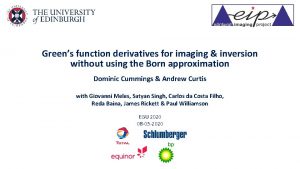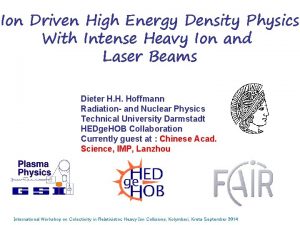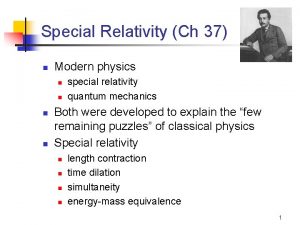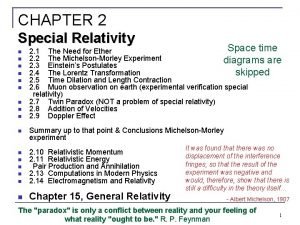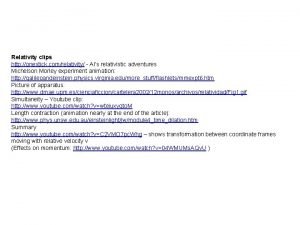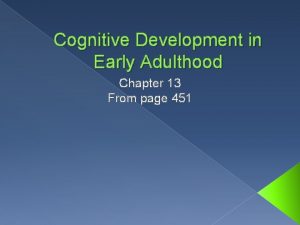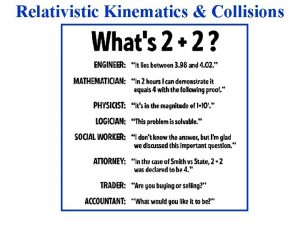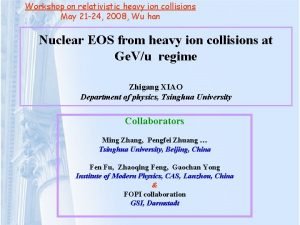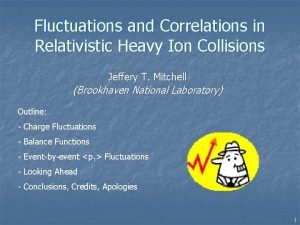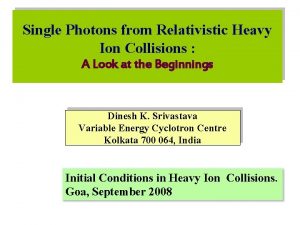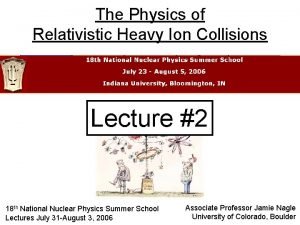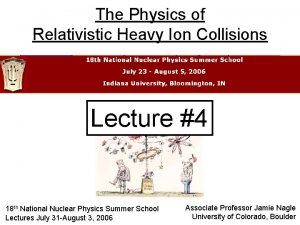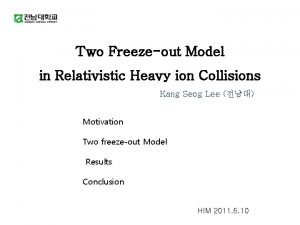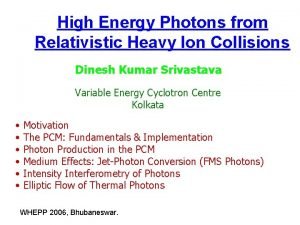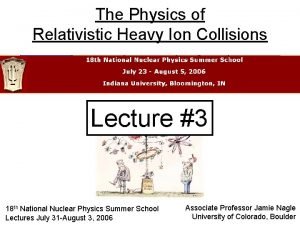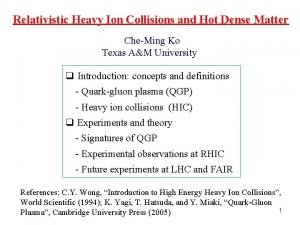Schwinger mechanism in relativistic heavy ion collisions 2019









![Reference [1] Xin-li Sheng, Ren-hong Fang, Qun Wang, Dirk H. Rischke, Phys. Rev. D Reference [1] Xin-li Sheng, Ren-hong Fang, Qun Wang, Dirk H. Rischke, Phys. Rev. D](https://slidetodoc.com/presentation_image_h2/cae6b2fed30855b6a14d6b92d99ab1ce/image-10.jpg)

- Slides: 11

大学生研究计划结题报告 课题名称:Schwinger mechanism in relativistic heavy ion collisions 2019. 10. 30 报 告 者: 方 硕 学 号:PB 17071424 导 师: 浦 实 教授

Introduction and background

Motivation and Problems So, it’s very important to learn the pair production rate in electromagnetic field in new framework.

Method Used: Wigner Function Approach By calculating the Wigner function using Dirac equation, one can derive the Wigner equation: And by using Clifford algebra, the Wigner function can be decomposed as: Here, every coefficient has its own physical meaning. We can get them by solve the partial differential equations(DHW equations). Coefficients Physical meanings mass density vector charge current density chiral-charge current density magnetic-moment density

Steps 1. Investigate some literature and papers. 2. Reproduce the previous well-known results: Ø Solve DHW equations under strong and homogeneous electric field. Ø Solve DHW equations under parallel and spatially homogeneous electric and magnetic fields in separated Landau levels. Ø Calculate the pair production rate under electromagnetic field. 3. Extension 1: Compute chiral condensate in another approach. 4. Extension 2: Compute the charge current density, axial number density and chiral condensate.

Difficulties and Solutions Difficulties 1. The DHW equations are highly non-linear and as a result, it’s almost impossible to solve them in general case. 2. The DHW equations solutions under different Landau levels are hard to make a sum to get exact solutions. 3. The integral in the momentum space is usually hard to calculate. Our strategy 1. Consider the simplest condition: parallel and spatially homogeneous electric and magnetic fields. 2. Consider the electromagnetic field strength is high enough, one can just calculate the lowest Landau level as an approximation. 3. We can simplify the F-D distribution functions as a heaviside function. .

Results Using the method we have discussed, we can get the following results: 1. The pair production rate in parallel electromagnetic field in vaccum: This is exactly same as the well-known result derived by Schwinger in 1951, implying we get the correct result. And the general case where the fermions(such as quarks or electrons) already exist: 2. The charge current density(only z-direction nonzero):

Results 3. Chiral number density (new): 4. Chiral condensate and the magnetic field only condition (new): And all these results are in accord with the results known by everyone, which means we get the correct result.

Outlook
![Reference 1 Xinli Sheng Renhong Fang Qun Wang Dirk H Rischke Phys Rev D Reference [1] Xin-li Sheng, Ren-hong Fang, Qun Wang, Dirk H. Rischke, Phys. Rev. D](https://slidetodoc.com/presentation_image_h2/cae6b2fed30855b6a14d6b92d99ab1ce/image-10.jpg)
Reference [1] Xin-li Sheng, Ren-hong Fang, Qun Wang, Dirk H. Rischke, Phys. Rev. D 99, 056004 (2019) [2] Patrick Copinger, Kenji Fukushima, Shi Pu, Phys. Rev. Lett. 121, 261602 (2018) [3] Kenji Fukushima, ar. Xiv: 1209. 5064 [hep-ph] [4] Arpan Das, Deepak Kumar, Hiranmaya Mishra, ar. Xiv: 1907. 12332 [hep-ph] [5] Xin-li Sheng, Dirk H. Rischke, David Vasak, Qun Wang, ar. Xiv: 1707. 01388 [hep-ph] [6] G. V. Dunne, in From Fields to Strings: Circumnavigating Theoretical Physics, Ian Kogan Memorial Collection (3 volume set), edited by M. Shifman, A. Vainshtein, and J. Wheater (World Scientific, Singapore, 2004), pp. 445– 522 [7]王竹溪,郭敦仁: 特殊函数概论(北京大学出版社,北京,2000. 05. 01)

Thank you for your attention!
 Lippmann schwinger equation born approximation
Lippmann schwinger equation born approximation Ratey rational functions
Ratey rational functions Heavy ion
Heavy ion London forces
London forces Ion dipolo
Ion dipolo Fuerzas dipolo dipolo ejemplos
Fuerzas dipolo dipolo ejemplos Que es fuerzas intramoleculares
Que es fuerzas intramoleculares Relativistic momentum
Relativistic momentum Kinetic energy of a relativistic particle
Kinetic energy of a relativistic particle Al's relativistic adventures
Al's relativistic adventures Physical and cognitive development in early adulthood
Physical and cognitive development in early adulthood Early adulthood cognitive development
Early adulthood cognitive development
